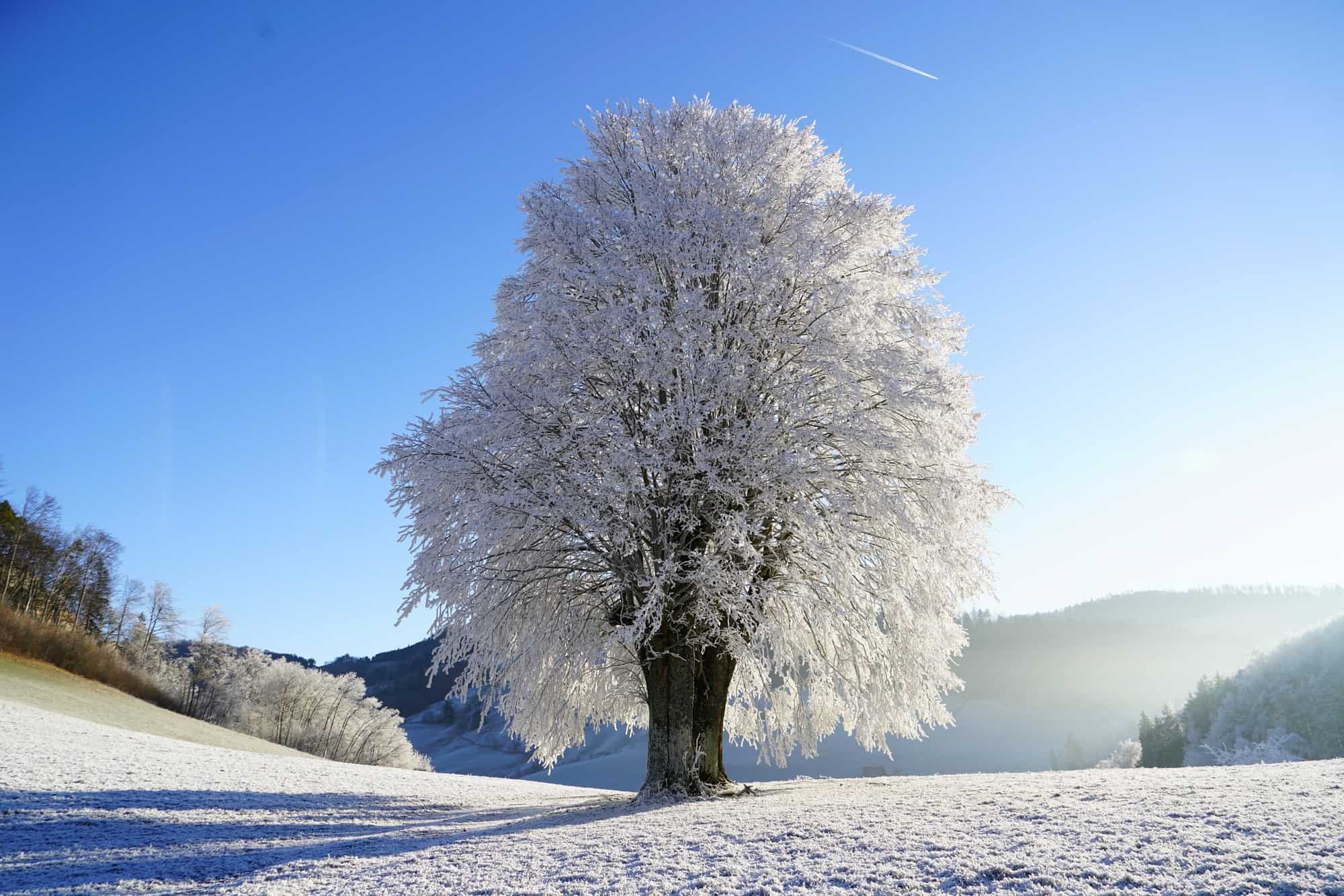5 Preventative Winter Tree Care Tips for Homeowners

While your family may be excited about the winter season, it’s unlikely that your beloved trees feel the same. While your winter may be filled with holiday greetings and warm cups of cocoa, your trees may be suffering serious damage outdoors.
Fortunately, much of winter tree damage is preventable. Rather you have an orchard to care for or a single backyard tree, read on to learn about winter tree protection that will help ensure your tree’s survival.
1. Start Early: Protect Your Trees from Frost Cracking
It’s not just the coldest time of year that you have to worry about. Established trees can see some of the worst damage when the temperatures start to dip.
In the fall, large swings in temperature can occur between daytime and nighttime. These large dips can cause established trees to expand and contract a rate they can’t comfortably reconcile.
This can cause large trees to crack experiencing a phenomenon known as “frost cracking.” Trees that crack due to exposure to sunlight experience a different effect known as ‘southwest injury’.
One of the best ways to protect against frost cracking is by wrapping your trees in a specially designed blanket to retain heat and guard against large temperature swings.
2. Protect Yourself From Winter Tree Mishaps
Winter tree protection doesn’t just mean protecting your trees. If you have a large tree near your home or driveway, you may consider bracing large tree branches before the winter frost sets in.
Trees that get too cold can often experience limb breakage. Limb breakage, especially limbs that are large and heavy, can cause big damage to your home or vehicle.
If a limb hangs over a high traffic outdoor area, you may want to take precautions to ensure that no one you love is harmed by a falling limb or branch.
3. Keep Rodents at Bay
if you have any pets that live with you, ensure that your store their food in tightly locked bins away from your trees. Rodents have been known to eat bark as a food source during the winter and take up residence in trees.
Keeping bags of dog or cat food outdoors can be a siren call for rodents who may take up residence in your trees. Rodent damage is a somewhat avoidable hazard to your trees and plants, so take precautions to limit the damage they cause.
4. More Quick Tips
When you’re pruning your trees for winter, it’s important to wait until the correct time. You’ll want to wait until after they’ve entered their dormant state. When the spring comes, you’ll want to check and address any issues that may have arisen during the winter season.
When planting new trees, you should always look for choices that are native to your climate. Growing trees and plants that aren’t well suited for your climate can mean more serious winter damage than you initially anticipate.
5. Do Your Winter Tree Homework
If you care about the trees you care for you’ll know how important it is to keep them healthy through the winter. Trees take time to grow to the point of becoming fruit-bearing, so starting over can be a time-consuming process.
Instead of waiting while your new trees grow at a glacial pace, take the time to research your trees predispositions toward winter weather. Knowing what to look out for can help you ensure that your trees stay happy and healthy for many seasons to come.
More for the Green Thumb
Need more help keeping your trees and plants healthy? Want to get the advice and insight you need with the click of a button?
For more valuable information on winter tree tips and how to help ensure that your trees and plants healthy through the winter season, be sure to check out our blog for more. To get a quote or schedule an appointment, call 704-366-1134.



You must be logged in to post a comment.